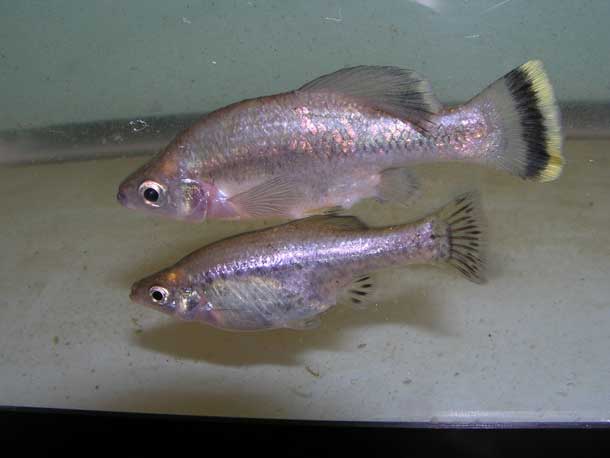I recently got an email from Dustin Holschuh that gave me the idea for this blog. Actually, under pressure from our web-wizard (Susan Harkey in Austin), I decided to kill two birds with one stone by combining my answer to Dustin with this blog.
Dustin wrote, “I’ve been reading your articles in TFH for about 2 years now. There always the first article I turn too. I’ve been keeping fish for 8 years and breeding live bearers . Mostly swordtails, platys and halfbeaks. But I really want to get into Goodeids. I currently have a 30 gallon planted aquarium that I’d like to put goodeids in. What species of goodeids is a good starting point ? Looking forward to your reply.”
First, Dustin, thank you for reading my column. Next, you seem to have the necessary experience to be successful with Goodeids. In many ways they are easier than swordtails and platies and are certainly easier than halfbeaks. Most Goodeids are not cannibalistic and are good candidates for multi-generational tanks. Another thing making them easier is they have much larger fry than swords and platies.
There are about 45 species of Goodeids, all hailing from Mexico’s central highlands. As a result of living at high altitudes, despite Mexico’s generally tropical climate, these fish can tolerate much cooler water temperatures than many tropical fish. People in the milder areas of the US raise them outside in pools. I’ve found their cold resistance to be a problem in our greenhouses; some of the species cease reproducing and might even be sterilized by our high summertime water temperatures (as high as 88°F). For example, we have not been successful with the members of the genus Skiffia. But, we successfully raise lot of several species, including:
- Ameca splendens
- Goodea gracilis
- Xenotoca eiseni
- Zoogoneticus tequila
Our high summertime temperatures don’t seem to bother these four species at all. The first three species are drop-dead easy to raise. I’m not sure how you can keep them from breeding. Z. tequila isn’t quite as prolific. G. gracilis, despite its name, is a relatively large fish and…well, let’s face it…isn’t that attractive. A. splendens lives up to its name; it is a very attractive fish. It is also probably extinct in the wild, although I’ve heard a report of a wild population having been found recently. X. eiseni, I think, is the prettiest of the Goodeids and has the advantage of being smaller than most.
To start out with, I’d go with either A. splendens or X. eiseni, starting with at least 3 pair. Place them into a well-planted tank (hornwort and Najas grass are both excellent), feed them well, and sit back to watch your population explode.
The photo is of a pair of A. splendens. The male shows the pink spangles of one the two lines we are working with. The other line has males with blue spangles. The female is not as spotted as most of our females.


Joy Nemetz says
I’m looking to get into breeding goodeid’s however their are no goodeid breeders here in canada I was wondering if you know how/where I can get some tequila goodeid’s not wild caught.
Charles Clapsaddle says
Joy, American Livebearer Association is a good source for breeding stock. I you aren’t a member, please consider joining. We raise Tequillas but they are still recovering from Hurricane Harvey and its aftermath. We might have some available next spring. Charles